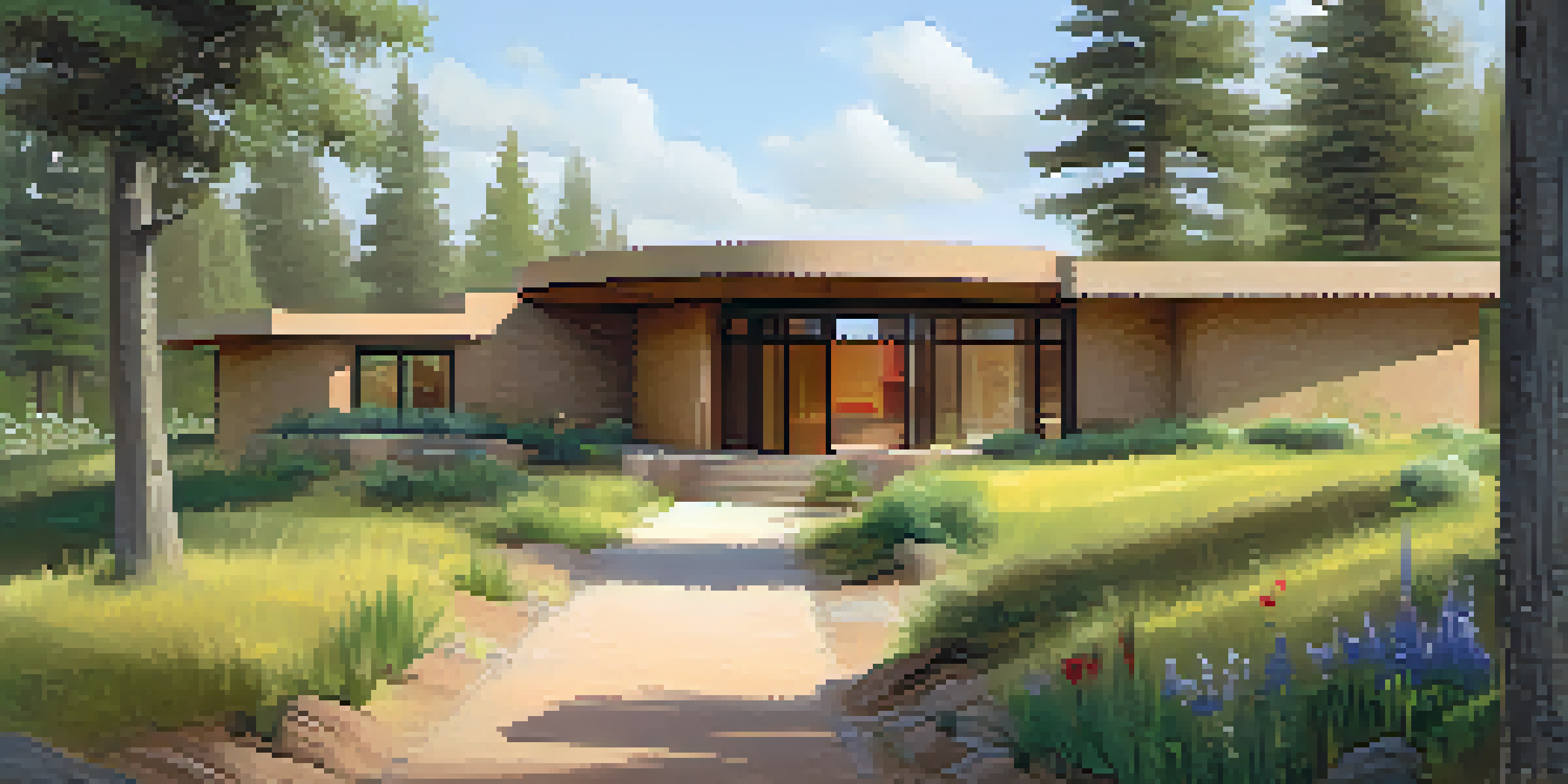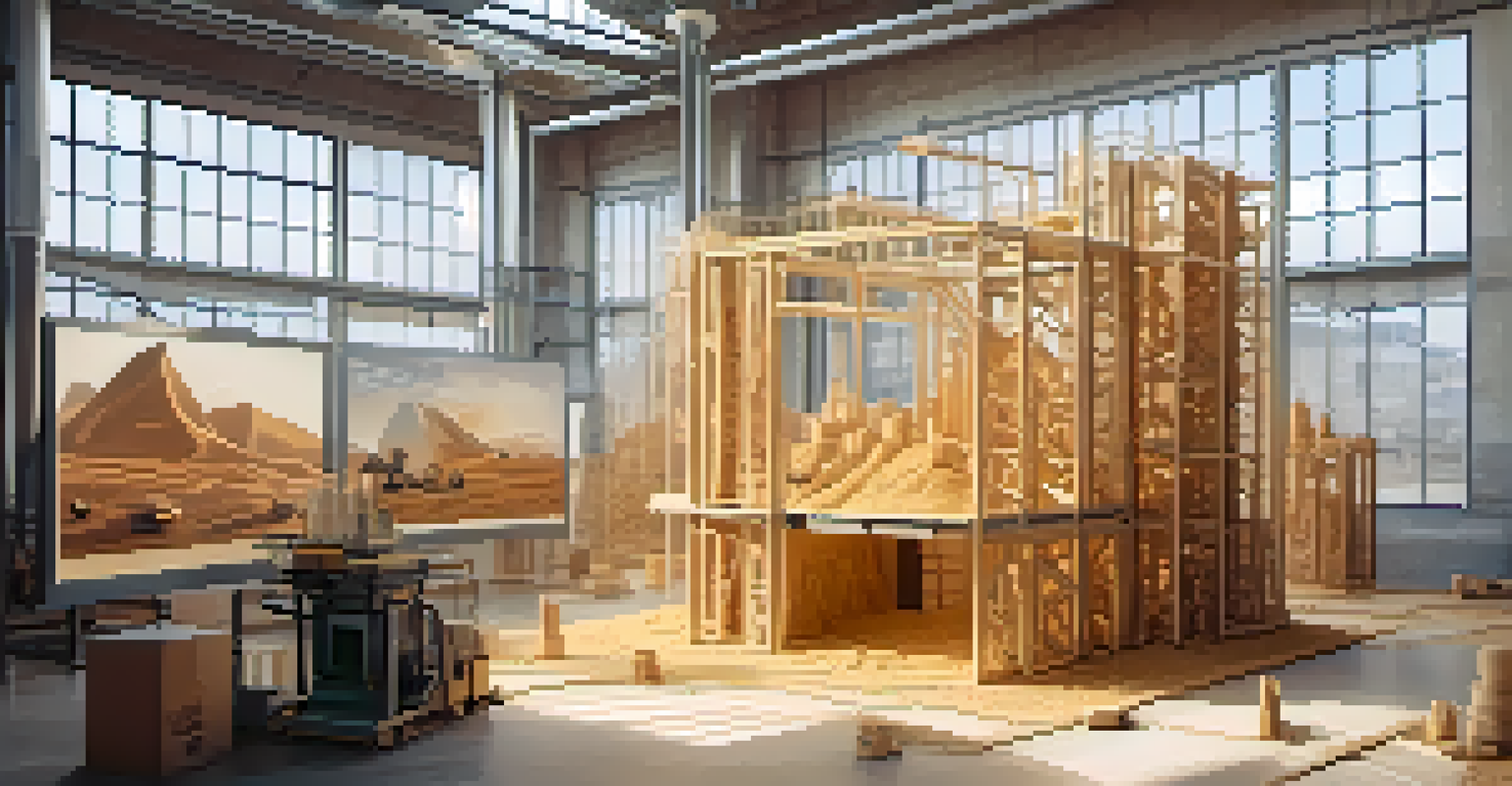Utilizing Earth-Based Materials for Eco-Friendly Construction

Introduction to Earth-Based Materials in Construction
Earth-based materials, such as clay, straw, and earth, have been used in construction for thousands of years. These materials not only provide structural integrity but also promote sustainability. By utilizing resources that are abundant and locally sourced, we can significantly reduce our carbon footprint.
The greatest threat to our planet is the belief that someone else will save it.
In recent years, the construction industry has seen a renewed interest in these traditional materials. This shift is largely driven by a growing awareness of environmental issues and the need for more sustainable building solutions. As we explore the use of earth-based materials, it’s important to understand their benefits and applications.
Transitioning to eco-friendly construction methods can feel daunting, but the potential for positive impact is immense. This article will delve into various earth-based materials, their benefits, and how they can be integrated into modern construction practices.
Benefits of Using Earth-Based Materials
One of the primary benefits of earth-based materials is their low environmental impact. They are often sourced locally, reducing the need for transportation and the associated greenhouse gas emissions. Additionally, these materials can be biodegradable and non-toxic, ensuring a healthier living environment.

Another advantage is their thermal properties. Earth-based materials tend to regulate temperature better than conventional materials, keeping buildings cooler in summer and warmer in winter. This natural insulation can lead to significant energy savings over time.
Benefits of Earth-Based Materials
Earth-based materials reduce environmental impact and support local economies while providing excellent thermal properties.
Moreover, using earth-based materials can support local economies by creating jobs in sustainable construction practices. By investing in these eco-friendly options, we not only enhance our living spaces but also contribute to the well-being of our communities.
Types of Earth-Based Materials for Construction
Common earth-based materials include adobe, rammed earth, and cob, each with unique characteristics and benefits. Adobe, made from clay, sand, and straw, is known for its excellent thermal mass and durability. Rammed earth, on the other hand, involves compacting soil into forms, creating sturdy walls with a beautiful, natural finish.
Sustainable architecture is not about the materials or the energy. It is about the process of creating a living space that responds to its environment.
Cob, a mixture of clay, sand, and straw, is particularly popular for its versatility and ease of use. It can be sculpted into various shapes, allowing for creative architectural designs. Each of these materials offers a distinct aesthetic, connecting buildings to their natural surroundings.
In addition to these, natural fibers like straw bales are also gaining traction in eco-construction. They provide excellent insulation and can be used in combination with other materials to create energy-efficient structures.
Innovative Techniques in Earth-Based Construction
Modern technology has paved the way for innovative techniques in earth-based construction. For instance, 3D printing with earth materials is emerging as a game-changer, allowing for precise, efficient building processes while minimizing waste. This method can significantly speed up construction time and reduce labor costs.
Another exciting development is the use of stabilizers, such as lime or cement, to enhance the strength and durability of traditional earth materials. These stabilizers improve water resistance and structural integrity, making them suitable for a wider range of climates and conditions.
Innovative Construction Techniques
Modern technology, like 3D printing and stabilizers, enhances the use of earth materials, making them more viable for contemporary construction.
The combination of ancient techniques with contemporary technology creates a harmonious balance between sustainability and modern living. This fusion not only preserves cultural heritage but also meets the demands of today’s construction challenges.
Challenges in Earth-Based Construction
While earth-based materials offer numerous benefits, there are challenges to consider. One significant issue is the perception that these materials are less durable than conventional options. This misconception can hinder wider acceptance and adoption in mainstream construction.
Another challenge is obtaining the right type of soil for specific projects. Not all soil is suitable for earth-based construction, and proper testing is essential to ensure structural stability. Additionally, local building codes and regulations may not always accommodate these alternative materials.
However, with ongoing research and advocacy, these challenges can be addressed. As more builders and architects showcase successful projects, the popularity of earth-based construction is likely to grow, creating a more sustainable future.
Case Studies of Successful Earth-Based Projects
Numerous successful projects around the world highlight the potential of earth-based construction. For example, the Earthship homes in New Mexico are renowned for their innovative use of recycled materials and earth-based techniques. These self-sustaining homes demonstrate how effective and beautiful earth-based architecture can be.
In Europe, the use of rammed earth in modern homes has gained recognition for its aesthetic appeal and energy efficiency. Many of these homes blend seamlessly into their natural surroundings, showcasing the versatility of earth materials in contemporary design.
Challenges and Future Outlook
Despite challenges in perception and material suitability, ongoing research and successful case studies point towards a sustainable future in construction.
These case studies not only inspire future projects but also provide valuable lessons on best practices and techniques. They serve as tangible examples of how earth-based construction can meet the needs of modern living while prioritizing sustainability.
The Future of Eco-Friendly Construction
The future of construction is leaning towards sustainable practices, and earth-based materials are at the forefront of this movement. As awareness of climate change grows, the demand for eco-friendly building solutions will likely increase. Innovations in material science and technology will continue to enhance the viability of earth-based construction.
Moreover, as more builders and developers embrace these materials, we can expect a shift in industry standards and practices. Educational programs and initiatives promoting sustainable building will play a crucial role in this transition, equipping future generations with the knowledge they need.

In conclusion, utilizing earth-based materials for construction not only benefits the environment but also enriches our communities. By embracing these practices, we can build a sustainable future that honors our planet and its resources.